Hitting the Beach: Tarawa 1943 Reviewed
By Mitch Reed
Tarawa 1943 from finally arrived at NDNG HQ, and I was eager to check out this solo game that features the mid-war bloody battle that lives in US Marine Corps lore. I played the game a few times right after it was delivered and I cannot stop playing it, some how the game dares you to beat it which makes it very addictive. For those who do not know about Worthington Games I suggest you check them out. They put out a lot of games that differ from the usual hex and counter style of board wargames, and have taken risks on producing some interesting projects. Devil Dogs is one such game which came out in 2019. It is a game that tries new things and creates a great experience for the gamer. Worthington also produces a lot of bock games which should appeal to the miniature gamer.
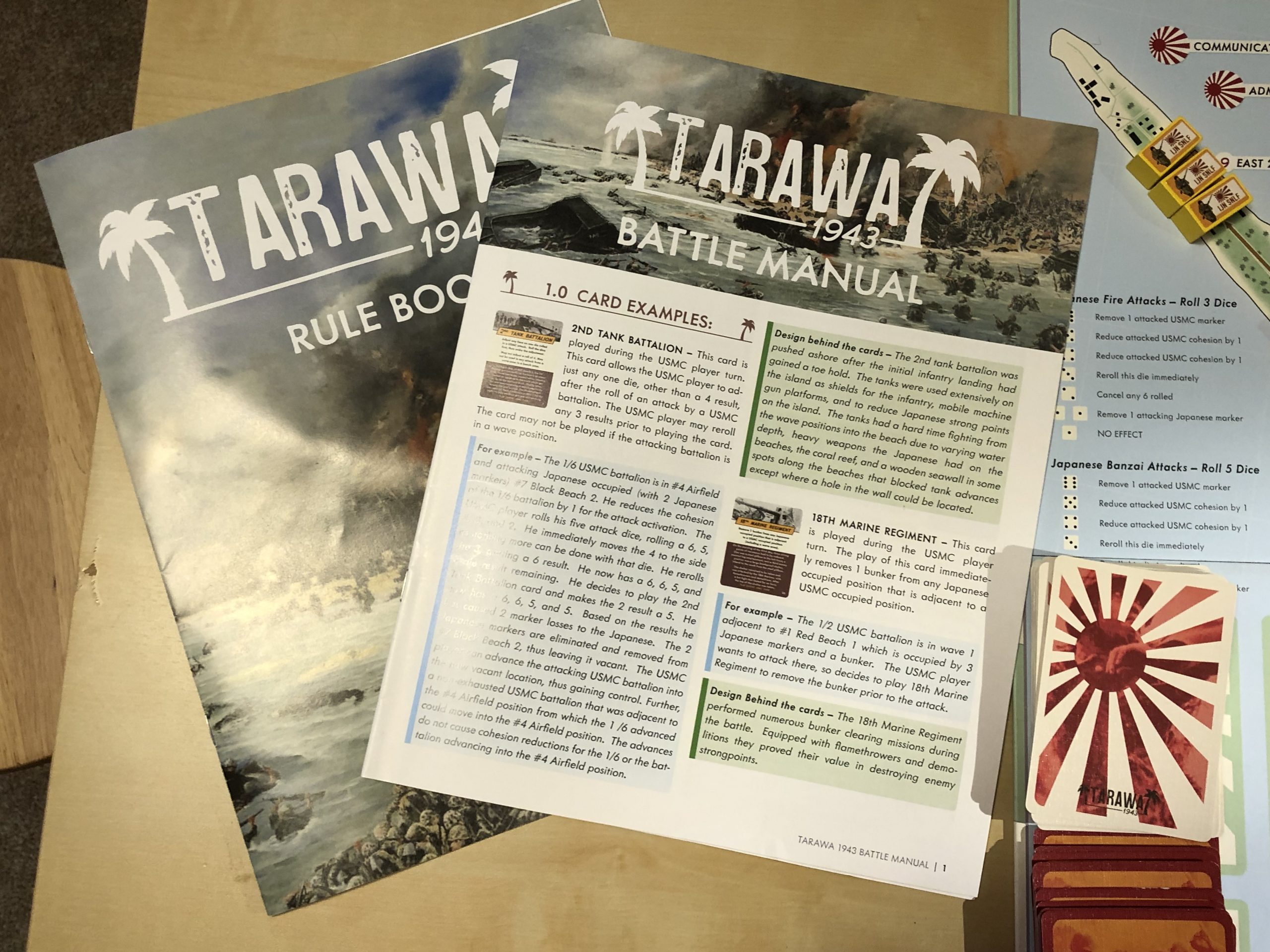
Tarawa 1943 is from ground up a solo game where you play as the leader of the 2nd Marine Division who is tasked with capturing the island of Betio in the Central Pacific. The game utilizes a card driven AI mechanic that is simple and just works excellently with this game. The Japanese forces are placed on the island in set locations, and you get to select landing beaches with your USMC regiments by assigning them to specific beaches and waves.
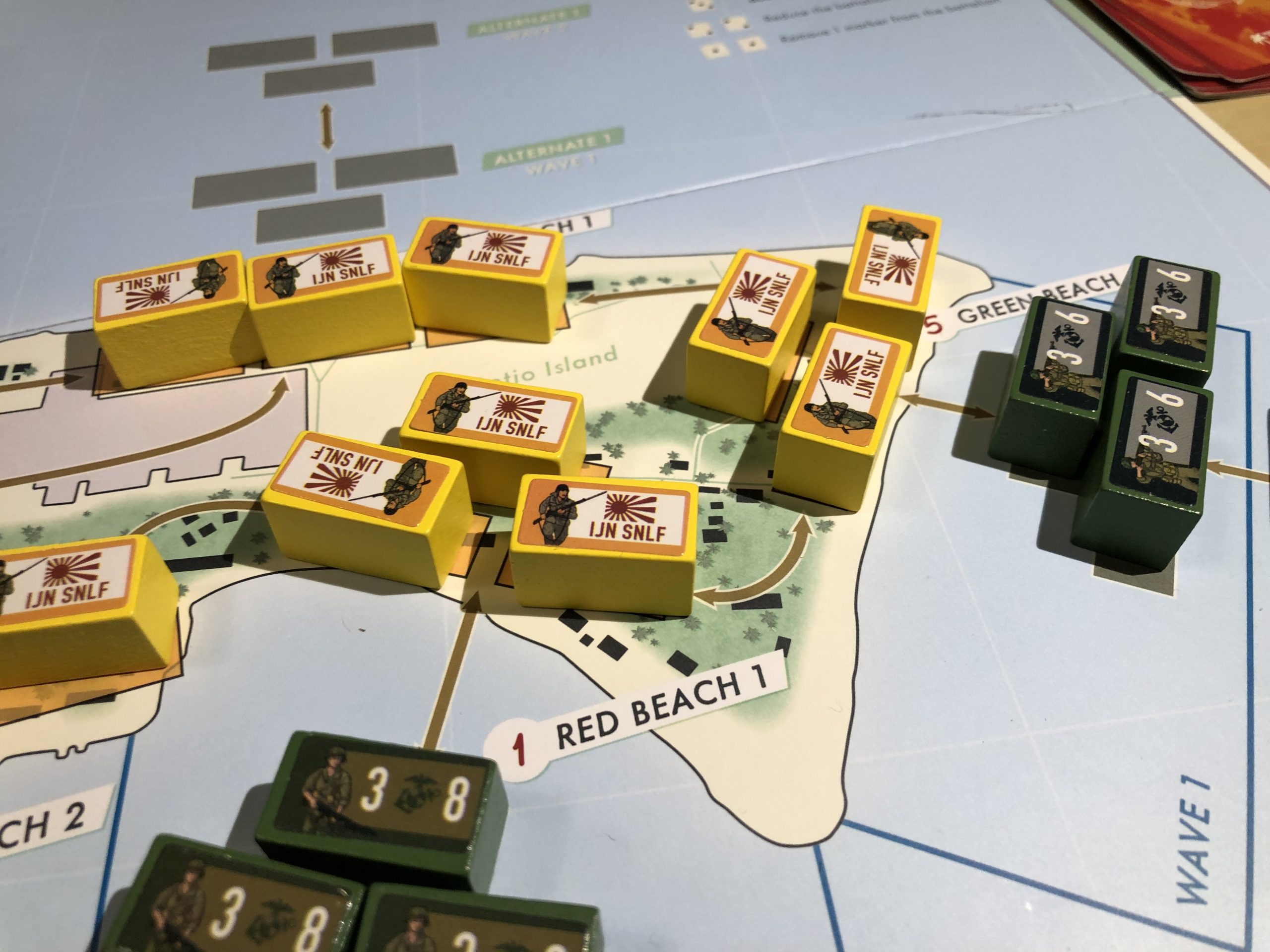
The Marines also get a deck of cards that allows specific action to be conducted during your or the AI enemy’s turn. Some cards are bad and can cause you to miss a turn.
However most of the cards allow you to perform actions with multiple units, add fire support to an attack or replay the actions of some of the heroes who fought in the battle. During a turn you refill your hand of cards (up to three) and you can play a card and select one unit for an action. These actions are to attack, move, regroup or rotate your battalions. Each action you pick for a unit causes its cohesion level to go down by one which I will explain later.
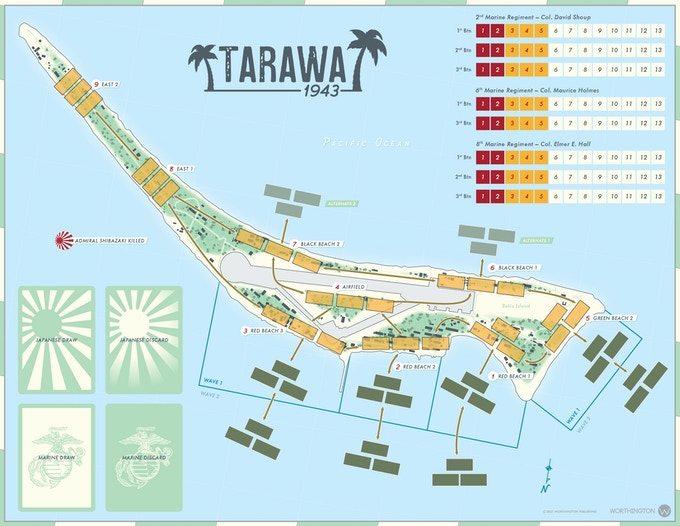
Each Marine battalion is represented by three wooden blocks and the map has a track for each that gives you the cohesion of that specific unit. Units can take losses and lose blocks due to combat and from using it to move, attack and regroup and of course from enemy attacks. Once you unit has five of less cohesion points left, you must check for exhaustion which makes it ineffective until you spend a dedicated action to regroup.
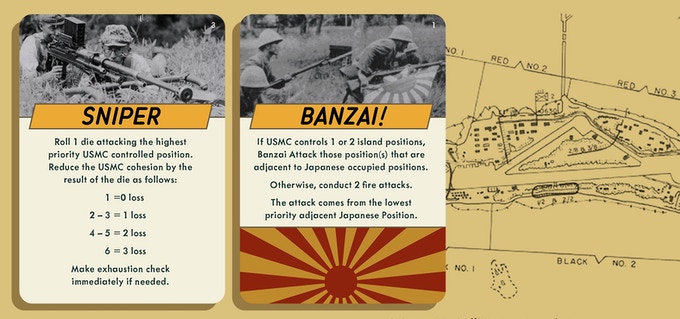
Units eat up cohesion points fast and you must decide to hold off on attack and recover some points to freshen up the unit. This “push your luck” mechanic is very popular in some solo games and works great in Tarawa 1943 as well.
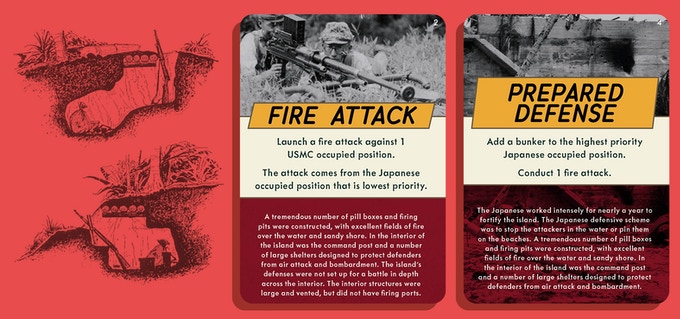
Time is a factor in the game, in the basic game the Japanese AI deck gets twenty-four cards, and when the last one is played the game ends. The game also has an easier version where you add three additional cards to the AI deck. The Japanese AI cards direct action such as normal fire attacks, Banzai attacks, establishes infiltrators in your rear area or sets up a defensive bunker which you must eliminate.
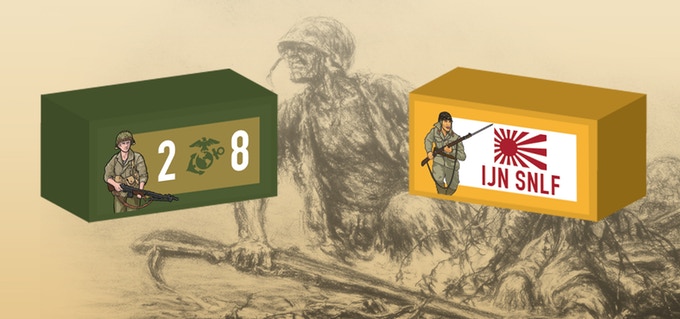
The action is intense and brutal, you will see you units get shredded and lose cohesion points fast. A USMC attack uses five dice and It takes combinations of double sixes and fives to eliminate a SNLF unit, where the Japanese, who roll three dice on a normal attack (five on a Banzai) only need a six to eliminate a battalion’s block, once you lose the third one the unit is removed from the game. You can reinforce a depleted unit, but that comes at cannibalizing another unit, so a player needs to manage a units strength (blocks) with how fresh it is (cohesion).
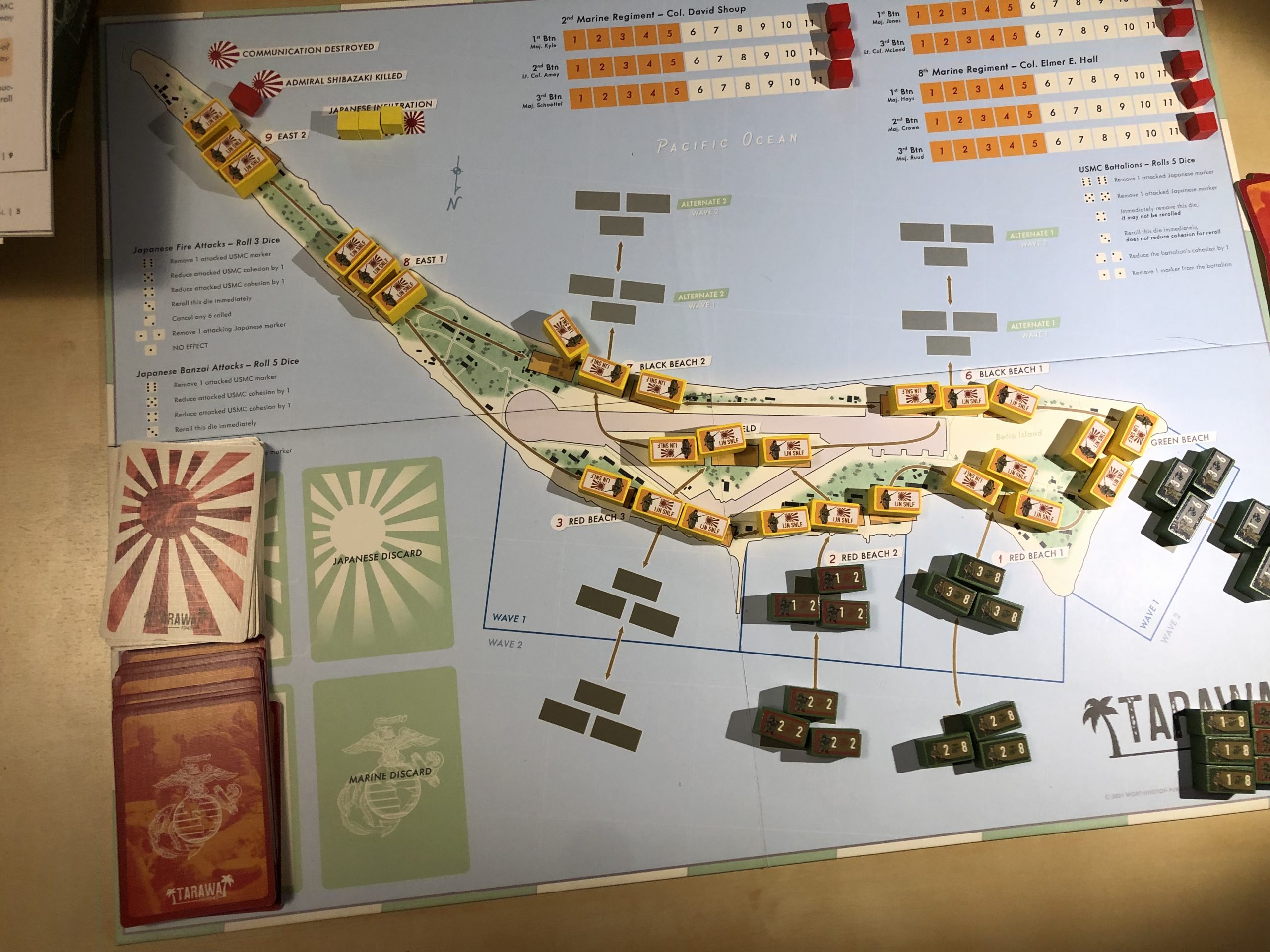
During your turn you have a lot of decisions to make, understanding that you need to clear the island without getting your force destroyed pushes to make decisions every step of the game. I found that each time I was about to flip an AI card I felt a lot of tension not knowing in a split second what pain was about to be placed on my battered force.
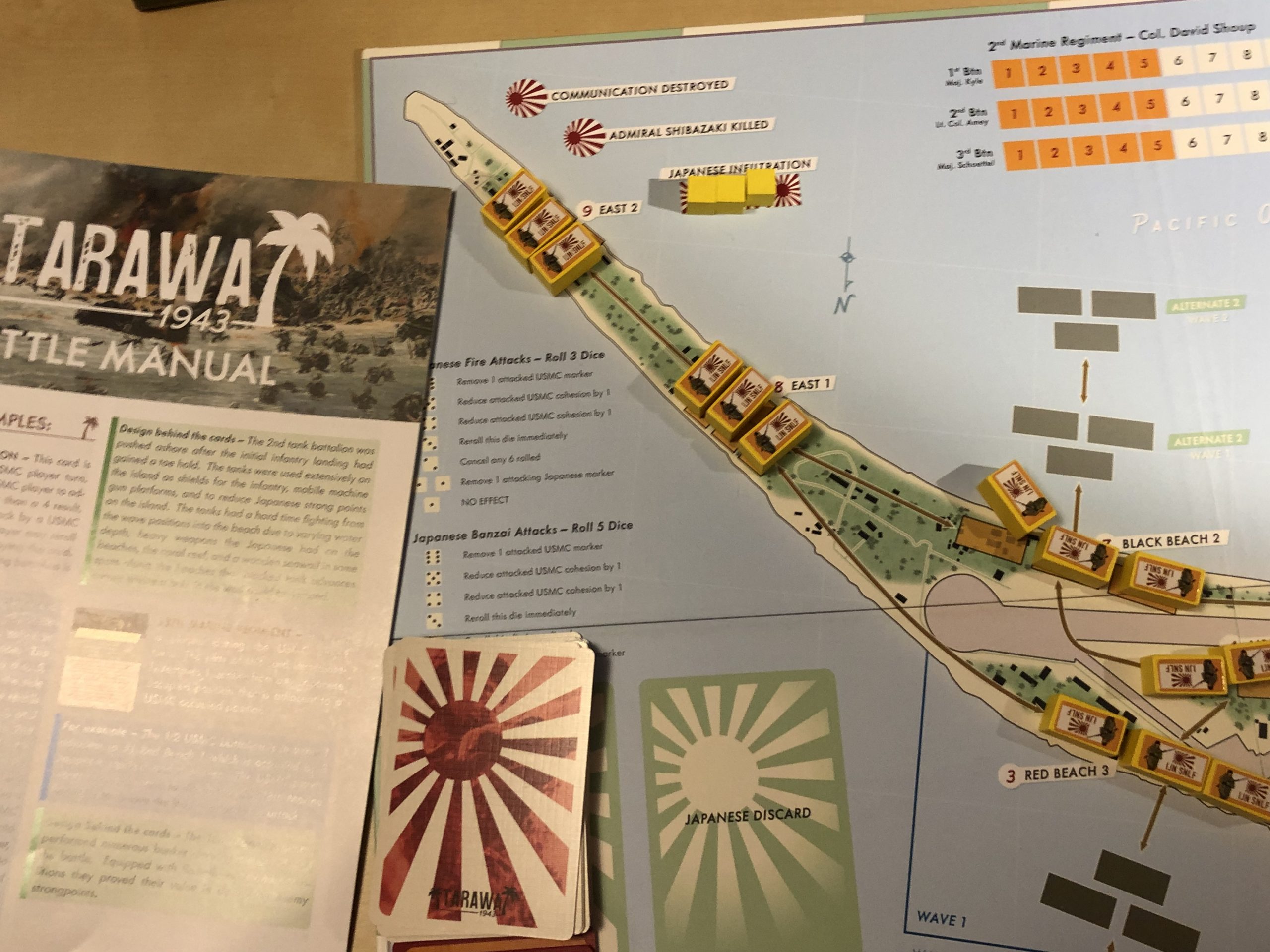
In two days, I was able to play about six games and I lost all of them. A lot of the game comes down to good die rolling, however you also must make sure that you are making smart choices during each turn. Card play for the USMC player is also important, with a hand of only three cards you must think about which card you will play during a turn (some cards can be used during the AI turn) and which ones you keep for later.
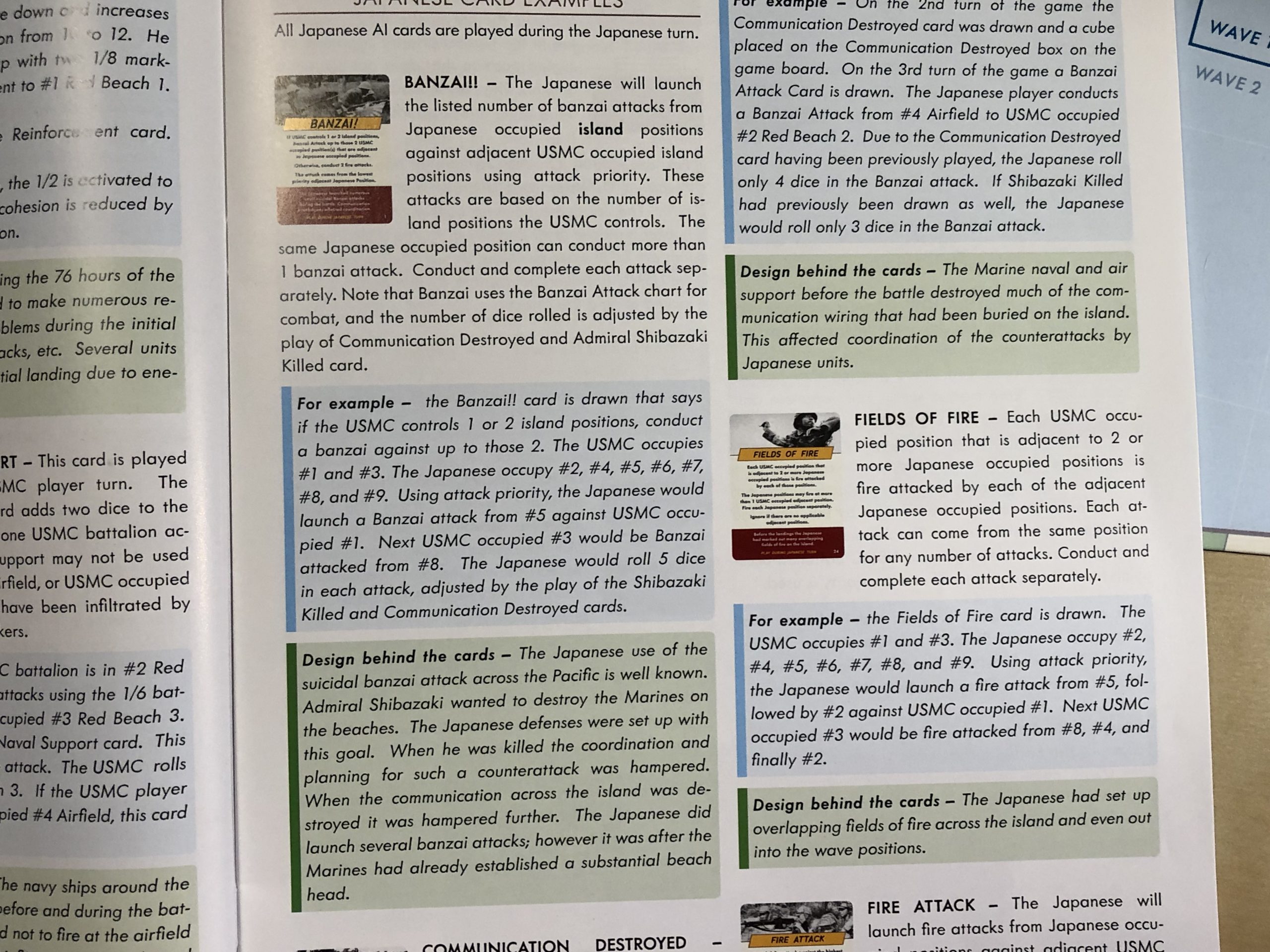
Despite not winning in my first six tries I do feel the game is very balanced, I did get better by assessing the situation better and choosing better options in my later games. While good die rolling is important in Tarawa 1943, you should not feel that the game relies on just that. Both sides get a lot of re-rolls during each attack and with the fact that the AI can lose units in the attack you will find the die rolling very balanced.
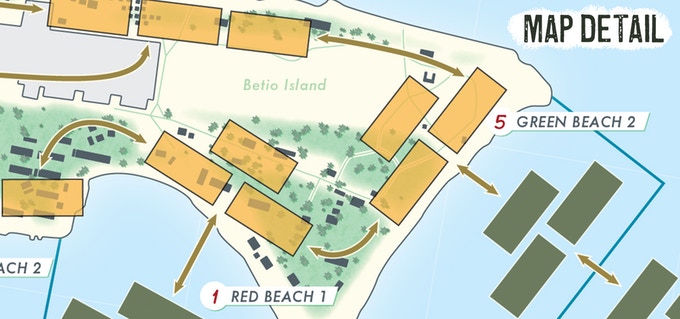
Once you get the hang of the rules after the first game, you will find your games lasting about 30-45 minutes at the most. This is not because the game is simple, it is due to the fast-paced nature of the game’s mechanics which makes the gameplay smooth and quick.
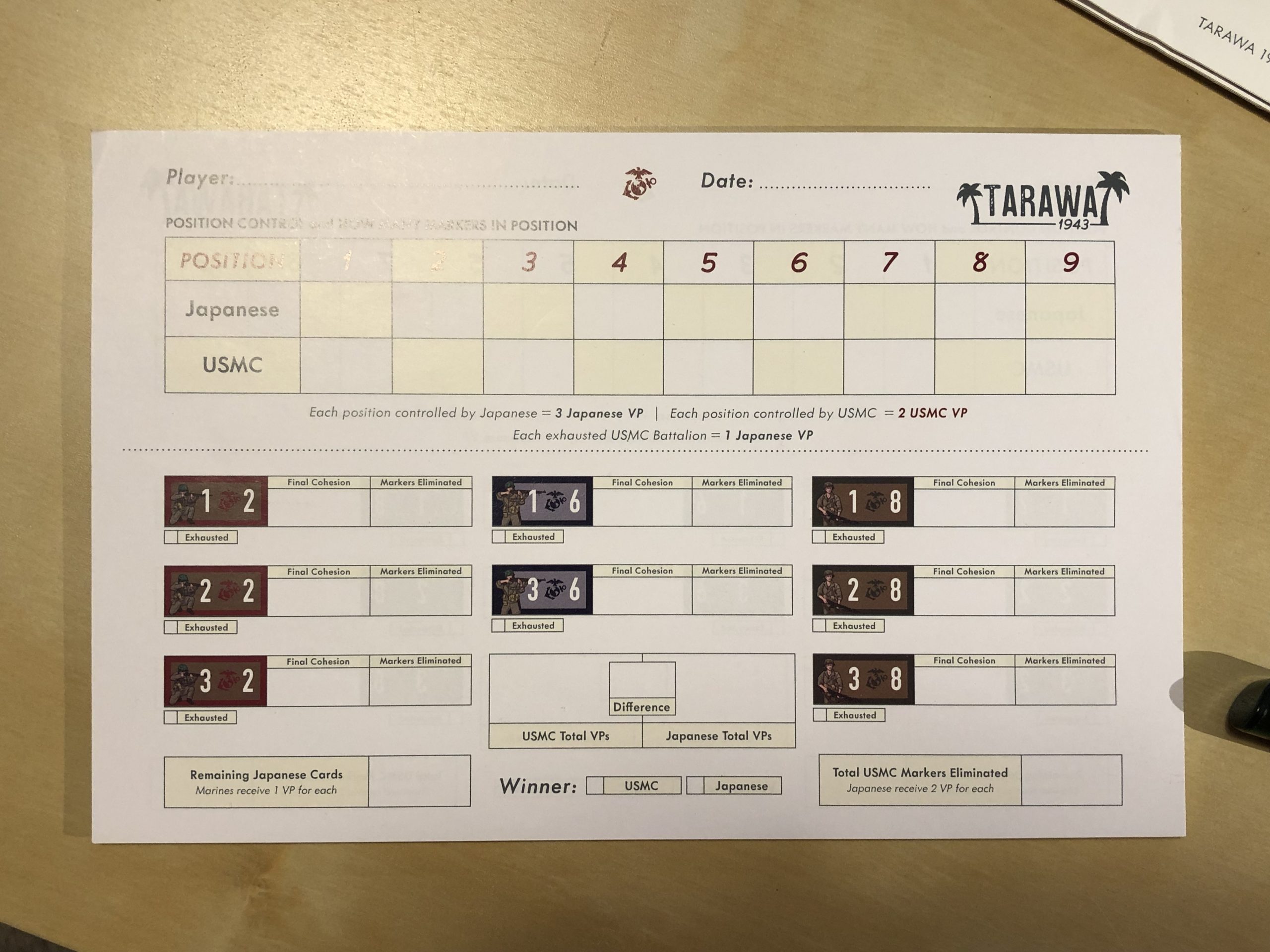
I usually set a high bar when it comes to a purposely designed solo play game. They are often harder to design, and many are just lacking a critical element or are just not as re-playable as I wanted them to be. Any solo game by (Pavlov’s House, Castle Itter, etc) are solo gaming classics that few designs can match. Tarawa 1943 meets my high bar with a slick and fluid game that is easy to play quickly yet does not insult the intelligence of the player.
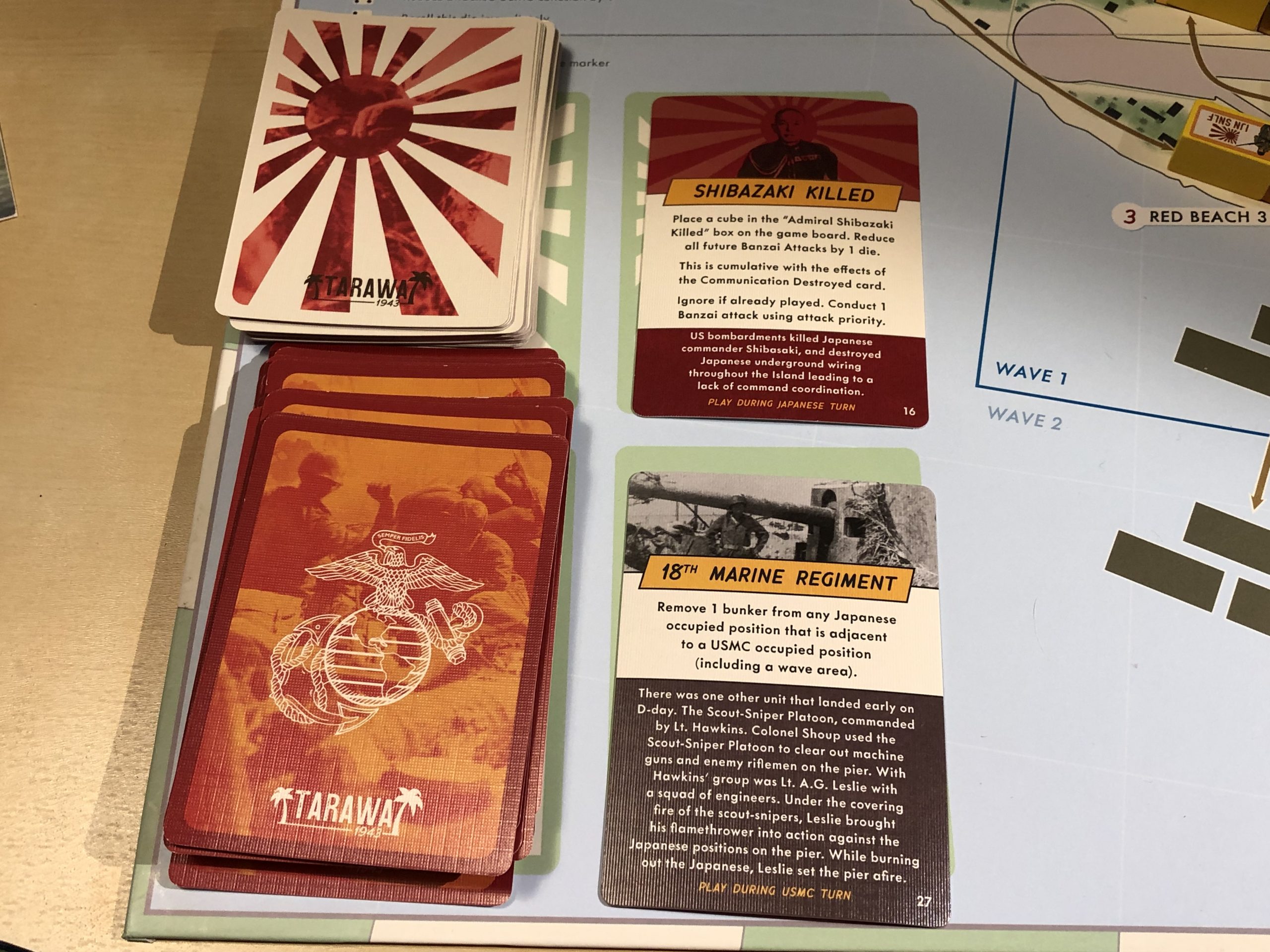
One neat thing about this game and is standard with all of Worthington’s titles is the game components. The map is colorful and mounted on a thick board, and the cards are high quality and very durable. The art for the blocks is excellent and the game comes with alternative stickers.
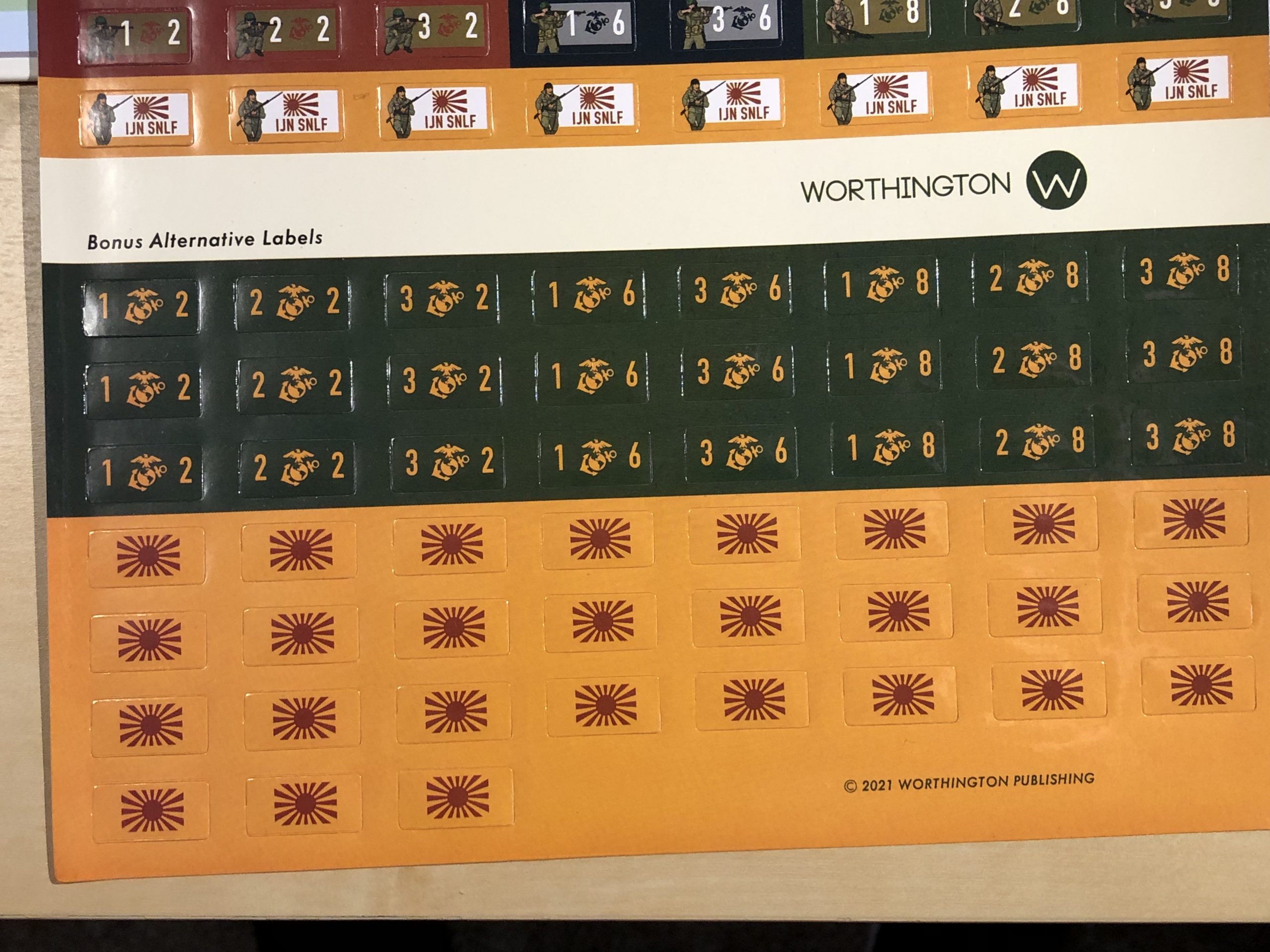
The mechanics of Tarawa 1943 just work in a way that just makes you want to keep playing the AI and finally beat it. I also feel that the mechanics of this game would work with a few other battles in many different eras. If you like a good, fun re-playable solo game I highly recommend picking up Tarawa 1943.
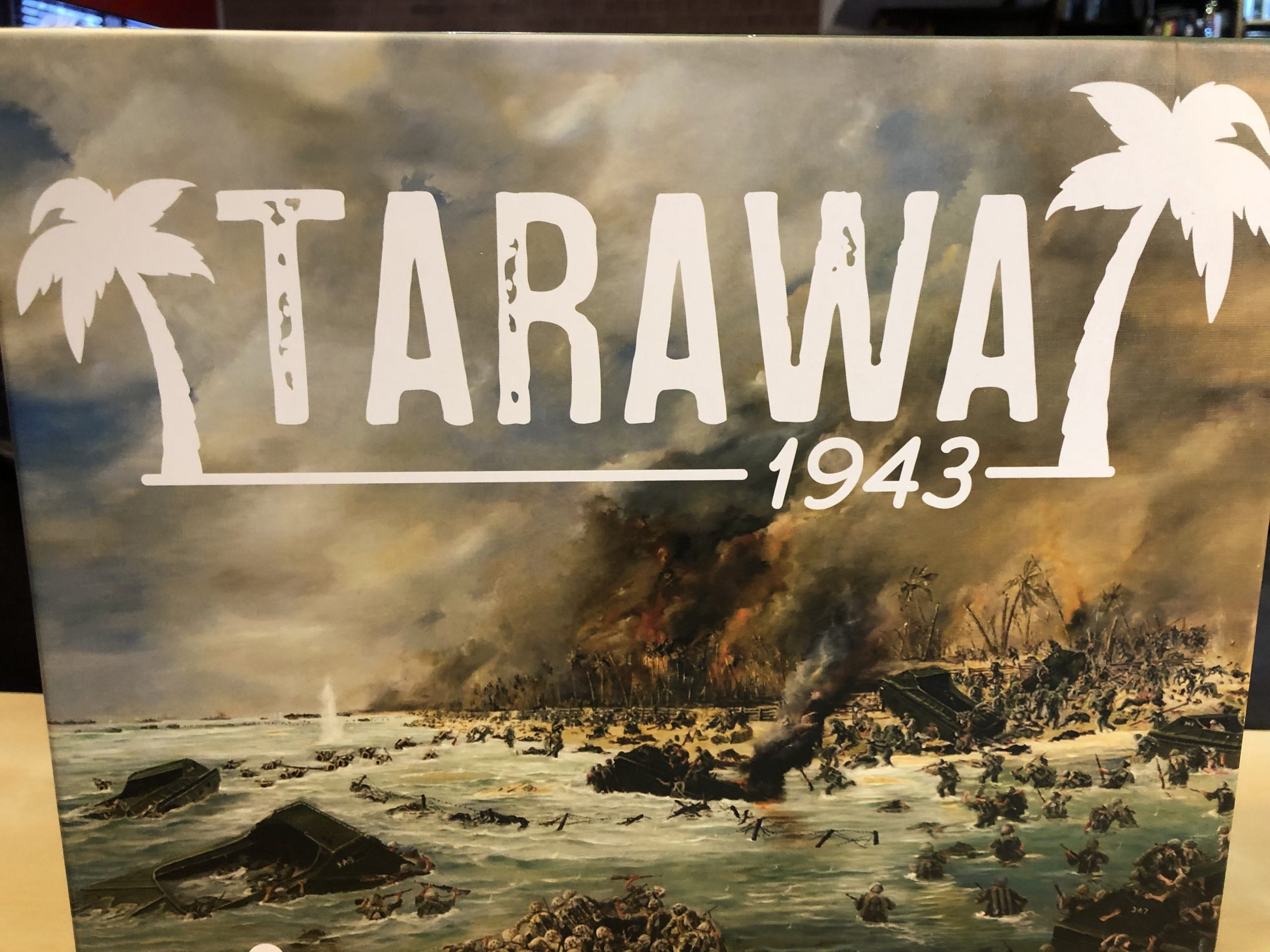

Great review, Mitch. Gave a very good feel for the game.
Thank you sir
I was kicking around getting the game and I think you have sold me to do so.
Nice review, sir